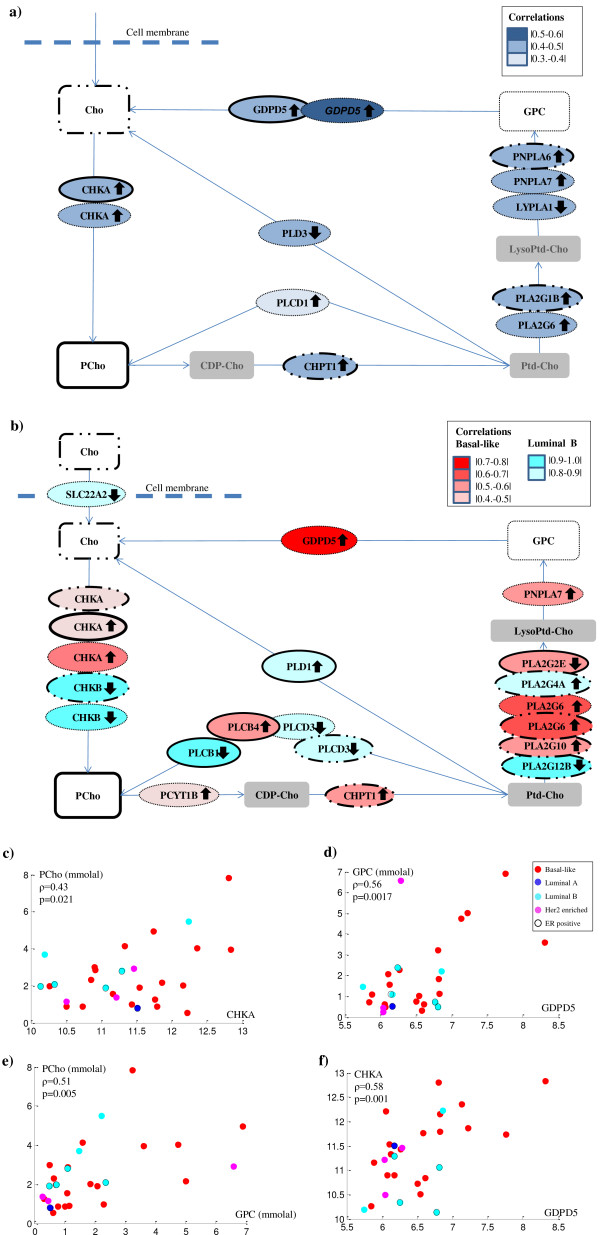Figure 4.
Major metabolites and genes contributing to the choline metabolism pathway. a) Genes (oval) in choline metabolism being either positively (arrows upwards) or negatively (arrows downward) correlated with Cho, PCho or GPC (rectangles) in the xenograft models. High expressions of CHPT1, PLA2G1B and PNPLA6 (marked with dots and solid outlines) are associated with high levels of Cho. High expressions of CHKA and GDPD5 (black outlines) are associated with high levels of PCho. High expressions of CHKA, GDPD5, PLA2G6, PLCD1 and PNPLA7, and low expressions of LYPLA1, and PLD3 (dashed outlines) are associated with high levels of GPC. b) Genes (oval) that are either positively or negatively correlated with Cho, PCho or GPC (rectangles) in the basal-like, and luminal B subgroup. In the basal-like subgroup (red), high expressions of CHKA, CHPT1, PLA2G10 and PLA2G6 (dots and solid outlines) are associated with high levels of Cho. High expressions of CHKA and PCLB4, and a low expression of PLA2G2E (solid outlines) are associated with high levels of PCho. High expressions of CHKA, GDPD5, PCYT1B, PLA2G6 and PNPLA7 (dashed outlines) are associated with high levels of GPC. In the luminal B subgroup (cyan) a high expression of PLA2G4A, and low expressions of CHKB, PLA2G12A and PLCD3 (dots and solid outlines) are associated with high levels of Cho. A high expression of PLD1, and a low expression of PLCB1 (solid outlines), are associated with high levels of PCho. In addition, low levels of CHKB, PLCD3 and SLC22A2 (dashed outlines) are associated with high GPC levels. c-f) Scatter plots of correlation between c) PCho and CHKA, d) GPC and GDPD5, e) PCho and GPC and f) GDPD5 and CHKA. ρ: Pearson’s correlation coefficient, Gene expression: normalized log 2 transformed.

